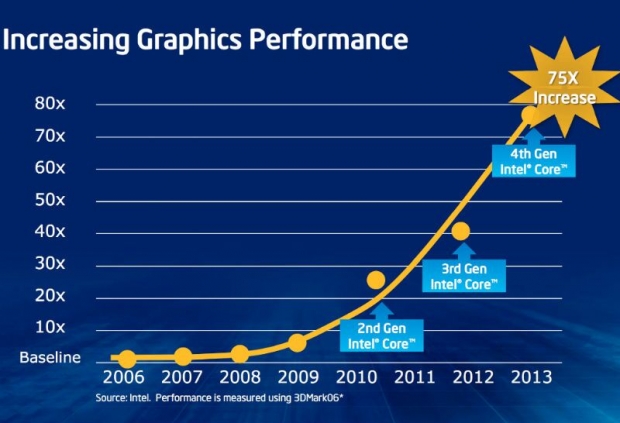Now the beancounters at Jon Peddi Research have suggested that year on year the GPU shipments dropped by 18.8 percent. Desktop graphics have fallen 21.7 percent while the notebook dedicated graphics segment is down 16.9 percent.
GPU sales are losing heavily to CPUs that contain a decent graphics part. Gamers are the major driving force for selling GPUs.
Notebooks with Intel integrated graphics provide a great multimedia experience, and can offer decent casual gaming at a lower cost compared to a PC with a separate GPU. The notebook with a dedicated GPU will obviously let you play better, but if you are not into gaming that much, it does not matter if the GPU is on the CPU or a discrete solution.
The low end GPU market has been heavily affected by tablets. Despite the tablet sales being down for two consecutive quarters, they have still negatively impacted the sales on the entry level GPUs in both notebooks and desktops.
AMD's overall unit shipments decreased 25.82 per cent quarter-on-quarter, Intel's total shipments decreased 7.39 per cent from last quarter. Nvidia's decreased 16.19 per cent.
The overall PC market decreased 4.05 per cent quarter-on-quarter, and 10.40 per cent year-on-year. Desktop graphics add-in boards (AIBs) that use discrete GPUs decreased 16.81 per cent from last quarter.
Fudzilla met with several add-in boards partners (AIBs) in Taiwan and we saw that despite PC market decreases and that the AIBs GPU sales falling, the average selling price is getting higher. Some much needed encouragement from higher-margin products.
Some industry contacts shared with Fudzilla that in 2015 they have been selling more performance and high-end GPU based cards and they have to sell less cards to make more money.
This is not a bad position to be in but shows how much the GPU has become a part of CPU and as such can provide sufficient graphics power for most users.




